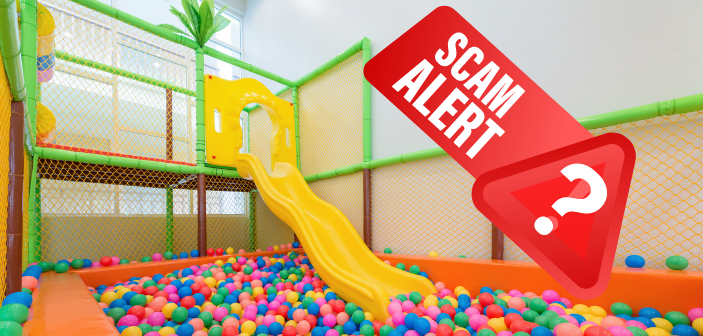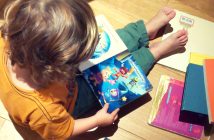“Your child will be way behind if you don’t sign up for this class! Don’t you want your baby to have the best chance of success?”
It’s a scare tactic parents have heard many times from play gyms and early education centers, however, it should be a warning sign to any prospective parent. Recently, some friends of mine took their child to an early education center here in Beijing and had these phrases hurled at them by members of the sales team. They didn’t love the class but were concerned they could be hurting their child if they didn’t sign up for something like it. They asked for my input.
Full disclosure: I spent many years as an early childhood educator, running programs, writing curricula, and training educators on best practices and pedagogy for our youngest community members. I was and still am a firm believer in the power of excellent educational experiences in the first five years of life. I believe categorically, and the science backs it up, that play-based early education can and does do magnificent things for the developing brain and can be a foundational map for a child’s happy, healthy life long educational journey. Unfortunately, excellent programs taught by well-informed, well-trained educators are few and far between. But they do exist.
Let’s start by talking about what early education can and can’t do. Allow me to geek out for a second and talk about what we know about the science of the developing brain.
90 percent of your child’s brain will develop by age 5 and 80 percent of that will happen before the age of 3. As their brain is growing, they are making neurological connections called synapses. Any of these connections that get used regularly by your child in the first years of life will become a permanent part of their brain’s information highway, while any that don’t get used regularly will be lost. Your child’s brain will form these connections naturally when exposed to stimuli. These connections will have a profound effect on a child’s ongoing cognitive, physical, and socio-emotional health throughout their life. What early education programs can and should do is provide a rich, guided environment to encourage and build those connections while strengthening them through fun and thoughtful repetition.
Here are a few things to look for that can signal the difference between an exceptional program that will be an enriching first learning experience and one that just wants your money.
Structured but not rigid: A great class is exactly that – a class. There should be a curriculum. It should have a clear opening, followed by a skill-building/themed middle, and a structured ritual closing. There should be some exploration or free choice time built into the course, but there should be skill-building games and stations for the students to work on during that time and the educator in the room should be guiding you and your child in making the most of it. Most importantly, every activity should have a purpose.
Red flags: If it’s all free play or it seems to be mostly fun, cute things to entertain the kids but there’s no real focus you should be concerned. Free play is important but frankly, you don’t need to pay for it, it’s free in more than one sense of the word.
Well-trained staff: This does not necessarily mean a degree in education. Some of the best teachers I have ever worked with are artists, singers, actors, and other creatives who are exceptional at being engaging, delivering information, and managing a classroom. In short, they were natural teachers. But I always made sure they had a firm foundation in early childhood theory and practice, and that they understood the reasons and goals behind each activity. Simply put, they should be knowledgeable. The best way to find that out? Ask questions about why they are doing something in a class, or more specifically, what skills an activity builds. Remember above when we said every activity should have a purpose? The educators should know what that is.
Red flags: If the teacher seems like a fun babysitter but doesn’t have a good answer when you ask, “So what is the purpose of playing with XYZ for a child’s development?” Hint: Even stuff that looks like it’s just fun such as bubbles and parachute time, is actually a treasure trove of early developmental tools. They should be able to articulate what those tools are.
Educating parents, not kids: Remember how I said your child will form these neural connections naturally? That means the educator’s job is to create the environment, provide the stimulus, and let nature do its thing. The vast majority of my time in classes was spent educating parents and keeping them from stopping the learning by rushing in to “help” their child “fix” a “problem.” Your teacher should be dropping educational one-liners on you constantly during a 45-minute class time. For example? “Grown-ups, I know peek-a-boo seems like innocuous fun but it’s actually incredibly important for helping your little one develop object permeance. That’s going to be important when you drop them off at school, when they are learning to share, and even putting toys away!”
Red flags: If the teacher rarely addresses the parents and doesn’t use developmental terminology when they do, they may not be as well trained as you would like.
Built for kids, not parents: Children this age have very specific needs. But too often I see classrooms built to impress parents with fancy pieces of massive equipment and murals on the wall. The room should be relatively small – remember, the students are small so a big space can be overwhelming – and child-friendly with limited art or distractions on the wall so that the child can focus on the activity in front of them. Equipment should be clean, well-cared for, and designed for this age group. Not retrofitted from programs for older students. The props should also be thoughtful. For example, clean-up buckets should have clear sides so the kids can see the toys when they put them away. Remember the object permeance above? If they can’t see the toys they think they are gone forever and are less likely to let them go. Again, everything has a purpose in early education.
Red flag: Playspaces are awesome and should be a bonus to the class but they are not classrooms in and of themselves. If the biggest selling point is a multi-story, super fancy, free play space with a candy-filled ball pit and live unicorn pony rides, they are probably not investing in classroom content. Nothing wrong with these things – I love a good fun zone – but don’t pay education prices for an indoor playground.
The owner’s background and experience: This is especially important if it is a franchise. Some people start programs because they are passionate about early education and helping kids and families. Some people start programs because they think it is an easy way to make money. The owners/directors should be experienced educators and administrators. Ask about their background.
Red flag: If the owners don’t have any educational background. Often these places are “retirement” jobs for those who used to work in business or sales.
You get what you pay for: These spaces have very high overhead costs. Excellent educators need to be paid well, developing a good curriculum and keeping up to date with the latest in early educational practices cost money. Likewise, keeping a space clean and maintained, not to mention rent, utilities and supplies are expensive. The margins are very small. By far the biggest budget line item is the recurring payroll. The easiest way to improve the bottom line? Hire less experienced or unqualified teachers with big personalities and hope parents don’t notice.
Red flag: The facilities are beautiful and exciting but the cost of the program is middle of the road or low-end. They are not investing in teachers and curriculum, they are investing in facilities.
Again, great early childhood programs are priceless and well worth the investment. But too many bad actors are dressing up a poor curriculum and untrained staff, then hooking parents with scare tactics. Make sure you get what you are paying for.
KEEP READING: Must-Have 24-Hour Children’s Emergency Phone Numbers
Images: Canva




